The Social Determinants of Health (SDOH) Training is designed to equip healthcare providers with essential knowledge about the factors beyond medical care that impact patient health. Understanding SDOH is critical, as social and environmental conditions, such as economic stability, education, healthcare access, and community support, play a significant role in health outcomes. Through this training, healthcare providers will gain insights into the main categories of SDOH, their influence on patient well-being, and the populations most affected. Additionally, participants will learn how to identify relevant social determinants, apply screening tools in practice, and implement strategies to address health disparities. With a focus on current policies and clinical integration, this training empowers providers to offer more comprehensive, patient-centered care that improves health equity and outcomes.
What You Will Learn:
- Main categories of SDOH
- How various social determinants influence health outcomes
- Populations most affected by negative social determinants of health
- Responsibilities of healthcare providers in identifying social determinants that affect patient health
- Practical strategies for healthcare providers to integrate SDOH considerations into clinical practice
- Current policies aimed at addressing social determinants of health
- How to effectively use screening tools to assess social determinants of health in patients
Details:
Course length: 1 hour and 15 minutes; CME: 1.25
Languages: American English
Key features: Audio narration, learning activity, and post-assessment.
Get Certified
American Medical Compliance (AMC) is a leader in the industry for compliance, Billing, and HR solutions. To become certified, please visit us at: American Medical Compliance (AMC).
Reach out for other courses by visiting the AMC Course Library.
Introduction to Social Determinants of Health (SDOH)
SDOH include factors such as housing, food and nutrition, transportation, social and economic mobility, education, and environmental conditions. Health-related social needs (HSRNs) refer to an individual’s needs that might include affordable housing, healthy foods, or transportation. This report provides select examples of the evidence in several of these areas.
Housing
Studies show strong evidence of the benefits for “housing first” interventions that provide supportive housing to individuals with chronic health conditions (including behavioral health conditions).
Food and Nutrition
Efforts to improve food access through healthy food environments, public benefit programs, health care systems, health insurers, and evidence-based nutrition standards can lower health care costs and improve health outcomes.
Transportation
Enhanced built environment interventions including sidewalks, bicycle infrastructure, and public transit infrastructure can make physical activity easier, safer, and more accessible.
Through this training course, healthcare providers will explore how social determinants of health (SDOH)—including socioeconomic factors like poverty, employment, and education—significantly impact patient health outcomes. Providers will gain insights into key areas such as housing, food and nutrition, transportation, social mobility, and environmental conditions, as well as health-related social needs (HSRNs) like access to affordable housing, healthy foods, and reliable transportation. Evidence-based approaches, such as “housing first” interventions for individuals with chronic conditions, food access initiatives to reduce healthcare costs, and transportation infrastructure improvements to promote physical activity, will be examined. This training equips providers with practical strategies to identify and address SDOH, ultimately improving health equity and patient outcomes.
Economic Stability
Some of the most obvious evidence for the link between employment and health comes from studies that compare the health of those who work for pay and those who do not, or assess consequences of job loss and unemployment.
A large body of research has shown that those who do not work for pay or are unemployed are less healthy than those in the paid labor force, based on their risk of mortality, self-rated health, and mental health.
However, it is important to remember that there is variation among individuals who are not employed for pay. Those who have another source of material resources and do not work by choice, whether they are raising a family, attending school, or pursuing other activities, may not have worse health than those who work for pay.
This training explores the connection between employment and health, showing that people who are unemployed or not working for pay often have worse health, including higher risks of illness and mental health challenges. However, not all non-working individuals face the same risks—those with financial stability, such as students or caregivers, may not experience these negative effects. By understanding these differences, healthcare providers can better assess and address patients’ employment-related health needs.
Education Access and Quality
Early childhood, particularly the first 5 years of life, impacts long-term social, cognitive, emotional, and physical development. Healthy development in early childhood helps prepare children for the educational experiences of kindergarten and beyond.
Early childhood development and education opportunities are affected by various environmental and social factors, including:
- Early life stress
- Socioeconomic status
- Relationships with parents and caregivers, and
- Access to early education programs.
Neighborhood and Built Environment
There are several aspects to housing that impact health, including:
- Affordability
- Stability
- Quality and safety, and
- Surrounding neighborhood.
Home design and structure significantly influence housing quality and may affect both mental and physical health. Poor housing quality and inadequate conditions — such as the presence of lead, mold, or asbestos, poor air quality, and overcrowding — can contribute to negative health outcomes, including chronic disease and injury.
Lack of air conditioning and heating can affect residents’ health. Cold indoor conditions have been associated with high blood pressure and respiratory conditions, as well as depression. Additionally, water leaks are associated with mold growth, which has been shown to affect respiratory health and increase the likelihood of asthma, coughing, and wheezing. Lack of smoke alarms, carbon monoxide detectors, and other fire suppression requirements can lead to injury and death. Lastly, residents of overcrowded homes may be at risk for poor mental health, food insecurity, and infectious diseases.
This training explores how housing quality affects health, from lead exposure and mold to poor air quality and overcrowding, which can lead to chronic illness, respiratory issues, and mental health challenges. Inadequate heating, cooling, and safety measures further increase health risks. Healthcare providers will learn to identify these housing-related factors and advocate for safe, stable living environments to improve patient health.
Social and Community Context
Relationships are important for physical health and psychosocial well-being. Relationships are conceptualized through terms such as social cohesion, social capital, social networks, and social support.
Social cohesion refers to the strength of relationships and the sense of solidarity among members of a community. One indicator of social cohesion is the amount of social capital a community has.
Social capital deals with shared group resources, like a friend-of-a-friend’s knowledge of a job opening. Individuals have access to social capital through their social networks, which are webs of social relationships. Social networks are sources of multiple forms of social support, such as emotional support (e.g., encouragement after a setback) and instrumental support (e.g., a ride to a doctor’s appointment). This summary will review the positive and negative health effects social cohesion has on an individual’s life.
This training explores how relationships and social connections impact health through social cohesion, social capital, and social support. Strong community ties provide emotional and practical support, improving mental and physical well-being, while weak social networks can lead to isolation and poor health outcomes. Healthcare providers will learn how social cohesion influences health, the benefits of social capital and support systems, and strategies to help patients strengthen their social networks for better overall health.



